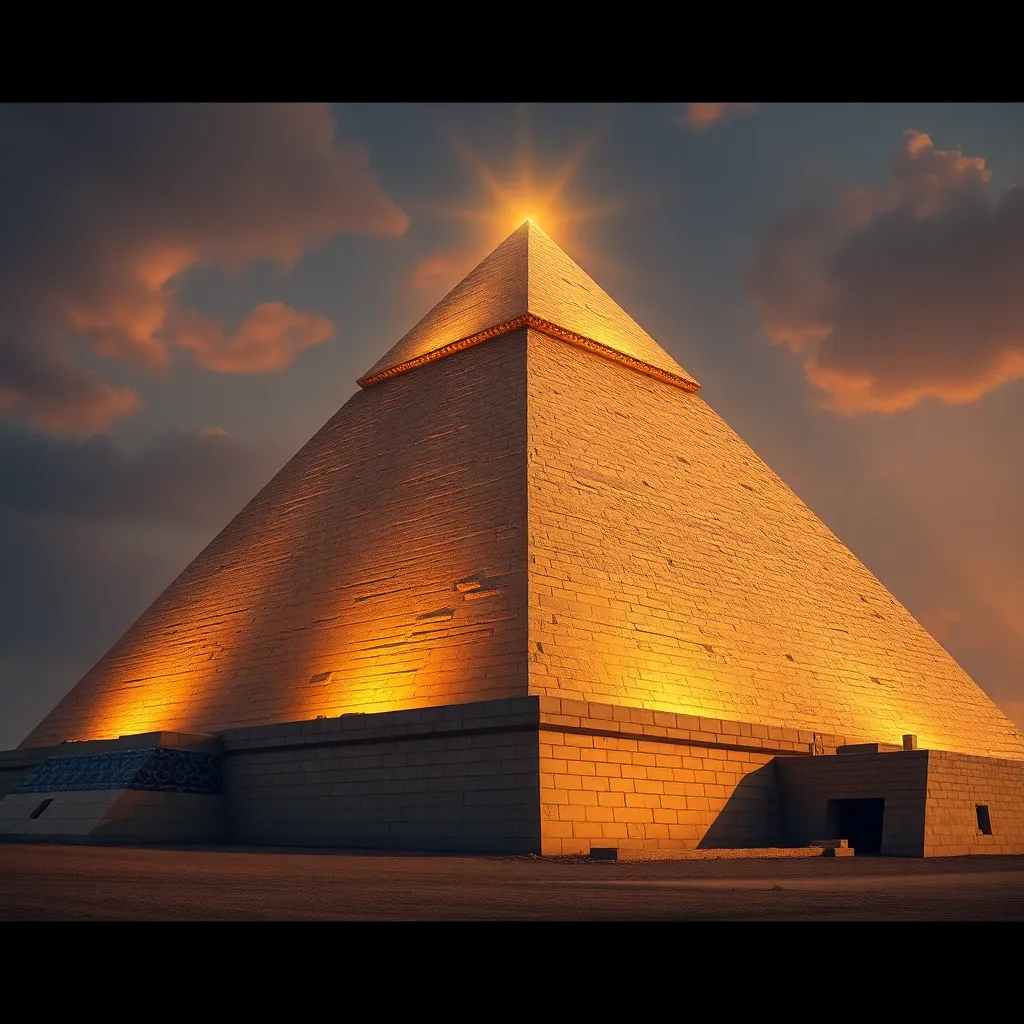The Pyramid of Khafre: The Guardian of Giza
I. Introduction
The Pyramid of Khafre, also known as the Pyramid of Chephren, stands as a monumental testament to the grandeur of ancient Egyptian civilization. Located on the Giza Plateau, it is the second-largest of the three pyramids built for the pharaohs of the Fourth Dynasty. The significance of this pyramid extends beyond its impressive size; it reflects the sophisticated architectural skills and the deep religious beliefs of the ancient Egyptians regarding the afterlife.
This article aims to explore the historical context, architectural features, symbolism, archaeological discoveries, and the ongoing preservation efforts related to the Pyramid of Khafre, highlighting its enduring legacy in the annals of human history.
II. Historical Context
The Pyramid of Khafre was constructed during the Fourth Dynasty of the Old Kingdom, a period known for its remarkable achievements in art, architecture, and governance. This era saw the rise of powerful pharaohs who commissioned monumental structures to cement their legacy and demonstrate their divine right to rule.
Khafre, the son of Khufu (the builder of the Great Pyramid), reigned during a time when pyramid construction reached its zenith. His pyramid, completed around 2570 BCE, was a continuation of the architectural advancements initiated by his father. The Giza Plateau itself holds immense historical importance as it hosts not only the pyramids but also the Great Sphinx, further intertwining the legacies of these ancient rulers.
III. Architectural Features of the Pyramid
The Pyramid of Khafre showcases an impressive design and dimensions that reflect the engineering prowess of the ancient Egyptians. Originally standing at 136.4 meters (448 feet), it was slightly shorter than the Great Pyramid of Khufu, which stands at 146.6 meters (481 feet). However, due to the loss of the outer casing stones, its current height is approximately 136.4 meters.
Key architectural features include:
- Base and Structure: The pyramid has a square base measuring 215.5 meters (707 feet) on each side.
- Interior Chambers: The pyramid contains a complex system of chambers and passageways designed to deter robbers and safeguard the pharaoh’s tomb.
- Outer Casing: Originally covered in highly polished Tura limestone, the pyramid would have gleamed under the Egyptian sun, creating a striking visual effect.
In terms of construction techniques, the ancient Egyptians utilized a combination of ramps, levers, and an organized workforce to transport and position the massive stones. Compared to Khufu’s pyramid, Khafre’s structure is often noted for its more refined architectural details, especially in the alignment and precision of the stones.
IV. The Sphinx: Khafre’s Guardian
The Great Sphinx of Giza, a colossal limestone statue with the body of a lion and the head of a pharaoh, is intrinsically linked to the Pyramid of Khafre. Standing guard at the entrance of Khafre’s pyramid complex, the Sphinx serves as a symbol of protection and power.
Significance of the Sphinx includes:
- Symbol of Protection: The Sphinx is believed to protect the pyramid and the pharaoh’s spirit as it journeys to the afterlife.
- Relation to Khafre: Many scholars suggest that the Sphinx’s face bears a resemblance to Khafre, indicating that it commemorates his reign.
- Theories of Purpose: Various theories propose that the Sphinx may have served as a solar deity or as a guardian of sacred knowledge.
V. Symbolism and Cultural Significance
The Pyramid of Khafre embodies profound symbolism and cultural significance within ancient Egyptian society. It stands as a powerful representation of the pharaoh’s divine status and his connection to the gods.
Key aspects of this symbolism include:
- Symbol of Power: The pyramid serves as a testament to Khafre’s authority and his role as a divine ruler.
- Religious Beliefs: The ancient Egyptians believed in an afterlife where the pharaoh would continue to exist, necessitating elaborate burial practices and monumental tombs.
- Legacy of Khafre: The pyramid is a lasting symbol of Khafre’s legacy, ensuring his memory endures for millennia.
VI. Archaeological Discoveries and Research
The Pyramid of Khafre has been the focal point of numerous archaeological discoveries and research initiatives. Key findings include:
- Tombs and Burial Goods: Excavations have revealed burial chambers and artifacts that provide insight into the funerary practices of the time.
- Studies of Construction Techniques: Ongoing research is shedding light on the sophisticated methods used in its construction, including the logistics of transporting massive stones.
- Modern Technology: Advances in technology, such as ground-penetrating radar, have allowed archaeologists to explore the pyramid’s interior without intrusive excavations.
VII. Tourism and Preservation Efforts
The Pyramid of Khafre attracts millions of tourists each year, drawn by its historical significance and architectural majesty. However, this influx of visitors poses several challenges for preservation and conservation.
Challenges include:
- Environmental Factors: Weathering and erosion due to natural elements threaten the integrity of the structure.
- Human Impact: Increased tourism can lead to physical wear on the site and surrounding areas.
- Lack of Funding: Insufficient resources for restoration and maintenance can hinder preservation efforts.
In response, various initiatives have been launched to protect the site and educate the public about its significance, ensuring that future generations can appreciate this ancient wonder.
VIII. Conclusion
The Pyramid of Khafre stands not only as a monumental architectural achievement but also as a symbol of ancient Egypt’s cultural and spiritual heritage. Its significance in the context of Egyptian civilization, coupled with its architectural grandeur, makes it a crucial subject of study and admiration.
As we reflect on the enduring legacy of the Pyramid of Khafre, it is clear that it continues to inspire awe and curiosity, inviting further exploration and understanding of the ancient world. The future prospects for research and tourism at Giza remain bright, promising to unveil more secrets of this remarkable civilization.




